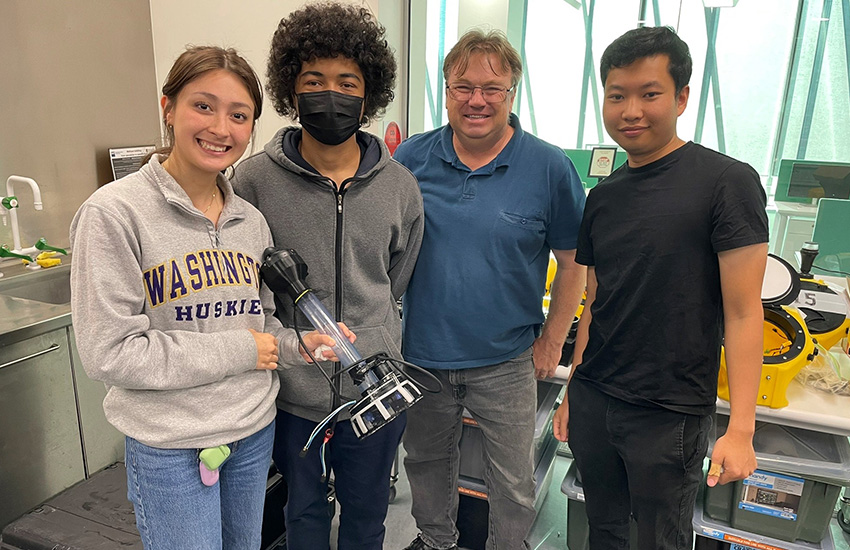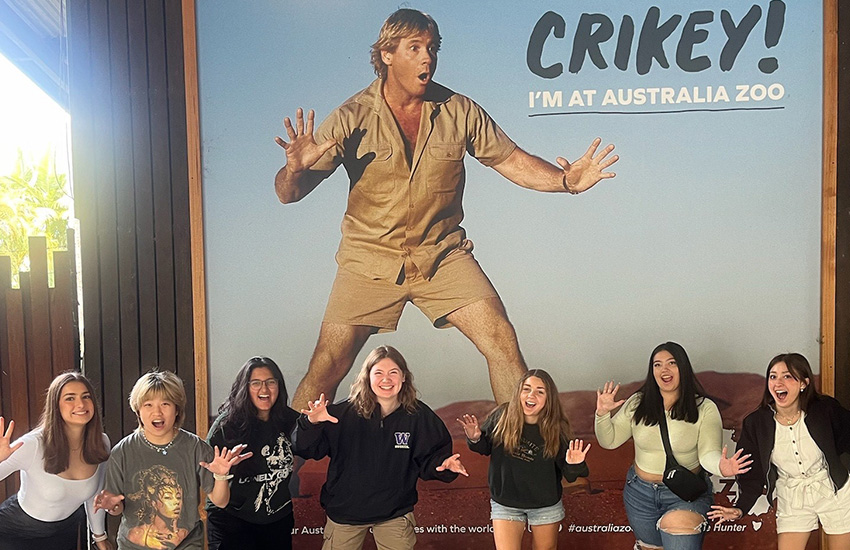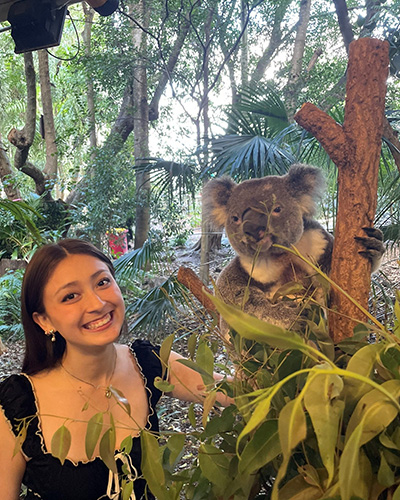October 14, 2024
Over the summer, 15 UW engineering students traveled to Australia’s east coast to design, 3D-print and build devices related to oceanographic science.

During a summer 2024 study abroad trip to Australia, one student team created an arm attachment for a robot built to help inspect a ship. Photo provided by Madeline Beltran.
Materials science and engineering student Madeline Beltran was looking for a summer study abroad experience that provided engineering class credits in a new, exciting environment. The five-week “Engineering Australia: Introduction to Engineering Design and Visualization” program was the perfect fit.
“It was great to participate in a tailored engineering study abroad program through the UW with clear expectations and goals,” Beltran says. “It was well communicated and managed, and was an experience I won’t forget.”
Led by ME Assistant Teaching Professor Eli Patten and electrical and computer engineering lead academic counselor Lauren Van Fossen, the hands-on program combined engineering graphics, visualization and 3D computer-aided design (CAD) with engineering design processes. Students also learned about local Australian culture, history and environment, including a lesson about the engineering accomplishments of indigenous Australians.

UW College of Engineering students at the Australia Zoo.
In the classroom, hosted at the Queensland University of Technology (QUT) in Brisbane, students learned to build models and construct their designs using 3D printing and other engineering design fundamentals. Students then applied these skills in small team projects with local stakeholders.
“The students learned how to implement a design process and manage a project using an Agile Scrum-like approach,” Patten says. “They identified user needs, did background research and generated concepts through design methods.”
After first prototyping their concepts using cardboard, tape and other materials, the students built and tested more advanced prototypes designed in CAD and improved upon these designs with 3D printing, laser cutting and parts sourced from local hardware stores.
Beltran’s team created an arm attachment for an existing robot built to help inspect a ship that will travel from Australia to Antarctica. They worked with Matt Dunbabin, an engineering professor at QUT, to create a final working prototype and provide suggestions based on their testing.
“I enjoyed being able to work with a professor from QUT and with Professor Patten, who taught us to advertise our product and align it with our goals,” Beltran says. “The project enabled me to apply my materials science background in labs and prototype shops that I wouldn’t have been able to do in a regular classroom setting.”

Students were able to visit a koala sanctuary.
Students also took part in lectures and group discussions led by Patten to learn about why engineers need to address problems, how to brainstorm and ideate, how to adapt one’s engineering style for each project and more.
“We reflected on a deeper level about why we were creating these products and how to make sure they’re applicable and tailored to key stakeholders,” Beltran says. “As engineers, we can be perfectionists, and we want to make something that will work the first time. Learning to pivot and be flexible with our design and communicate expectations with our team was invaluable.”
The program’s participants included students from ME, human centered design and engineering, bioengineering, materials science and engineering and more. Outside of the classroom, the students explored Australia together through surfing in the Gold Coast, snorkeling in the Great Barrier Reef, and seeing koalas and kangaroos at animal sanctuaries.
“It was great to bounce ideas off of one another based on the different classes we had taken,” Beltran says. “I made lifelong friends from engineering disciplines who I might not have met outside of this program.”